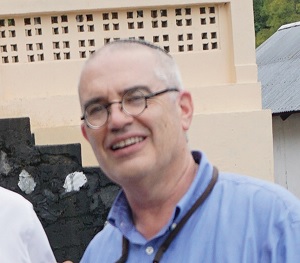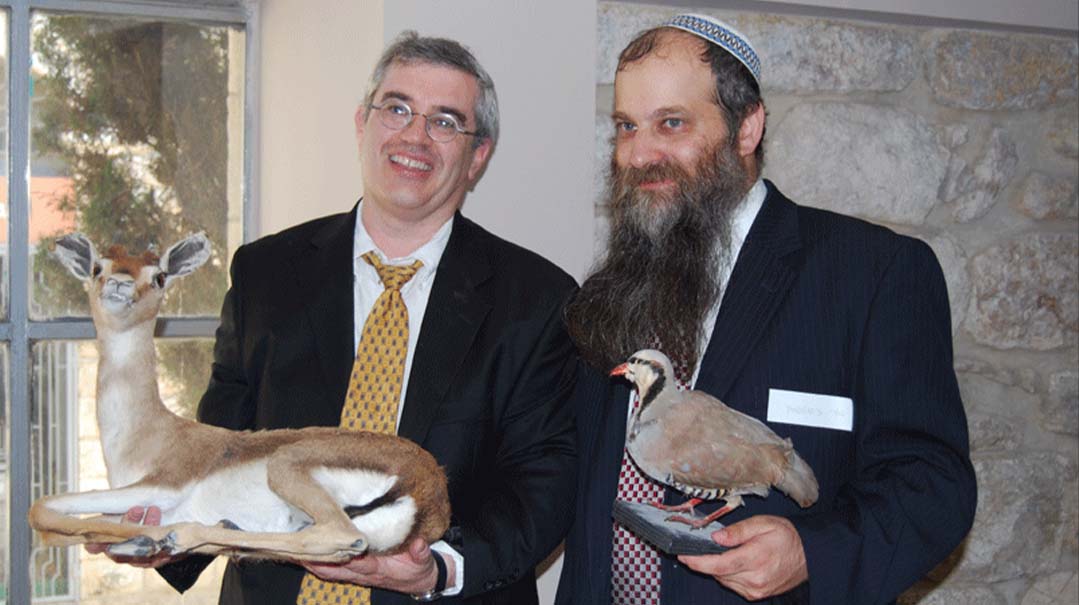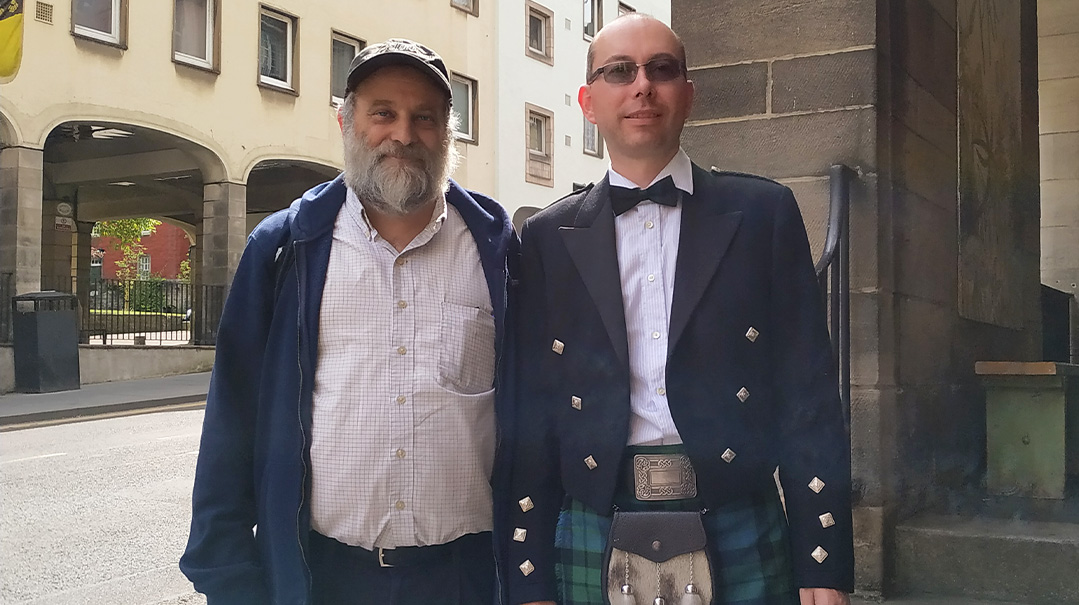Quail, Water Buffalo, And Locusts For Dinner: It’s All About Tradition


Sparrow, dove and pigeon broth, cow udder in saffron, guinea fowl pastry, and fried locusts. Not your standard restaurant menu, but that didn’t stop 250 curious Jews from participating in the most recent “Mesorah Dinner”

Two hundred and fifty hungry Jews recently made their way down to the Eucalyptus Restaurant outside the Old City which according to its logo serves "Biblical Israel Cuisine." Tonight the place would be living up to its claim with a vengeance thanks to the efforts of the unique neuroscientist/dentist team — Dr. Ari Z. Zivotofsky a professor of brain science at Bar-Ilan University and Dr. Ari Greenspan a dentist in Jerusalem —who have spent the past twenty-eight years revolutionizing the idea of what it means to be a kosher Jew.
For the fourth time in the past few years the Ari duo has organized what they call the “Mesorah Dinner” an occasion for brave souls to sup on flesh and fowl which although absent in regular Jewish cuisine have traditions of kashrus going back hundreds if not thousands of years. The Mesorah seudah has only one rule — any food without a halachic or historic culture would have no access to the tables tonight.
The story of these dinners goes back nearly three decades when Drs. Greenspan and Zivotofsky were in yeshiva together studying the practical laws of shechitah. At the time someone asked if they could slaughter a pheasant. The first question was whether indeed the pheasant is a kosher bird. The Torah lists just twenty-four birds that are not kosher implying that all the rest are. However because of the uncertainty of the identity of these birds the only birds treated as kosher today are those for which a reliable tradition a mesorah exists. Each community maintained its own mesorah regarding the kashrus of local birds.
Greenspan and Zivotofsky realized that in an age of industrial food production and centralized slaughterhouses the old rabbis and shochtim who remembered their local mesorah were dying out. The two have spent years traveling the world searching for clues and information about animals that are no longer eaten but are actually kosher. This was the fourth public feast of its kind to make sure the chains of these traditions don't disappear. The first was held in Jerusalem in 2002 followed by mesorah meals co-sponsored by the Orthodox Union in 2004 in New York and 2007 in Los Angeles.
Ari Greenspan approached the microphone with a pheasant which was squawking for help and making a valiant attempt to escape. Raising it triumphantly aloft Greenspan explained how his and Zivotofsky's interest in the dying mesorah was kindled by this very species. As the Ari duo have explained untold times this hapless bird was indeed the impetus for their lifelong mission.
"When we were asked to slaughter a pheasant we began to investigate. We found an article that traced the history of the "pasyon" (the Hebrew word for pheasant) for nearly 1500 years and demonstrated that it was always treated as a kosher bird. The gemara says that one of the types of slav eaten by the Jews in the desert was pasyon. In another place the gemara uses the pasyon as an example of a delicacy a person might feed a father to honor him.
"In the Eighteenth century the Divrei Dovid records that the Ramchal permitted pasyani and in the 19th century the Zivchei Kohen records that it was treated as kosher. But there is no way of knowing for certain that the bird called pasyon 1500 years ago — or even 100 years ago — is the same bird called pasyon today and the trail seemed to have gone cold. Rav Moshe Feinstein discussed the issue and concluded that he was unable to find a living person with a tradition on it and so it must be treated as non-kosher.
"We had all but given up hope of providing our friend with kosher pheasant when a friend in the yeshiva (who was at the dinner) mentioned to us that a leading Yemenite posek Rabbi Yosef Kafich had just that week spoken of a tradition attesting to the pheasant as a kosher bird. We asked Rabbi Kafich to confirm the kashrus of the pheasant but he insisted that we bring him two live pheasants so that he could verify that the bird we were calling pheasant was indeed the pheasant he knew. No easy task but we managed to find two birds we brought them to Rabbi Kafich shechted the birds and received a letter from Rabbi Kafich attesting to the fact that we had the tradition and could pass it on."
Unfortunately Rav Moshe passed away before Greenspan and Zivotofsky could apprise him of the discovery that they had unearthed the elusive mesorah of the pheasant bird.
Oops! We could not locate your form.






